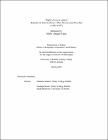| dc.description.abstract | On November 17, 1946, the former Partisan and budding Italian writer, essayist, and intellectual, Italo Calvino, wrote an article for L'Unità against the atomic bomb testing done in the Bikini Atoll of the Marshall Islands. He did not chastise his fellow man alone for this atrocity. Instead, he asked the reader to consider the perspective of the human and nonhuman animals living in the affected areas and having to not merely survive, but somehow live, in the wake of the aftermath. Throughout history, war has long exposed humanity's most base cruelties for the sake of greed and power, even if they are often carefully wrapped under cover of welcoming ideals like glory, honor, and sacrifice. Beyond textbooks and bids for political gain in times of war, glimmers of humanity's generosity of spirit also thrive. A photograph of a child caught in the brutal workings of the war machine can still touch us. People's stories and their experiences of war speak to every one of us as they call into question equally the depths as much as the heights of our humanity. The male protagonists from three of Calvino's war novels and novellas from the postwar period, from 1947-1957, forge the definition of humanity anew by challenging dichotomies between humans and nonhuman animals. The placement of Calvino's protagonists on the threshold when faced with both fictional and historical wars offers new insight on timeless questions of the body, the soul, and language. The methodological approach undertaken to conduct this research reflects the multiplicity of the subject at hand. A two-fold comparative literary and multidisciplinary perspective with a focus on new and old fields of Philosophy, Psychology, Literary Criticism, (Zoo)Anthropology, and Ecocriticism intends to engage a variety of human and nonhuman branches of knowledge and experience as well as meaningfully juxtapose them on the same page. The hope of this project is, albeit in a small way, to illuminate the many paths towards an inquiry of the soul and reinvigorate the power of literature as a scene of engagement across time, space, and language. | en |




